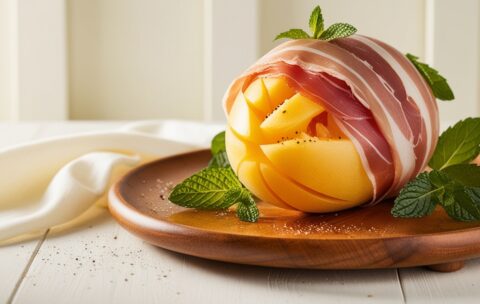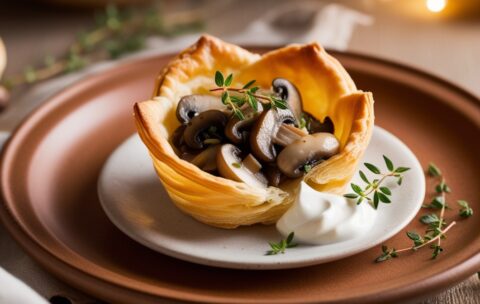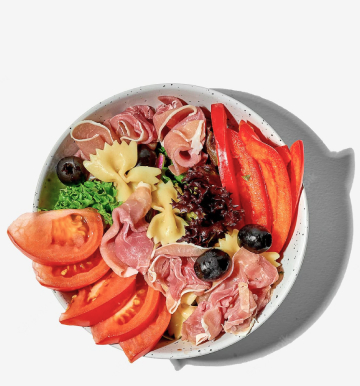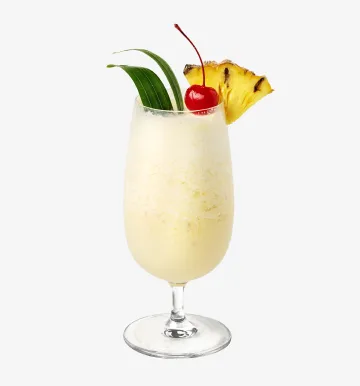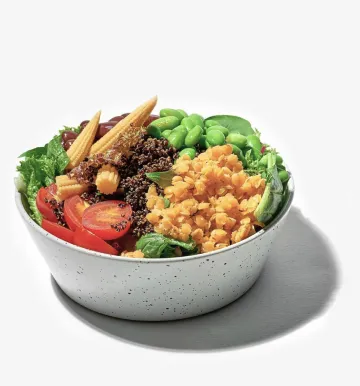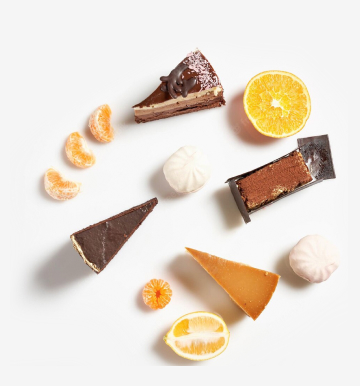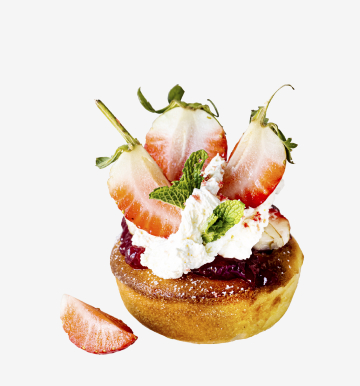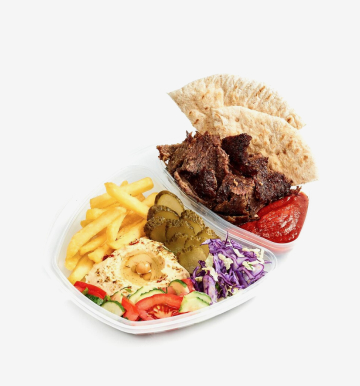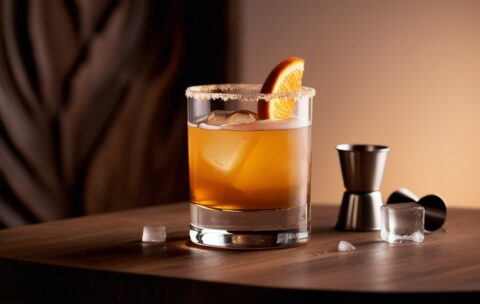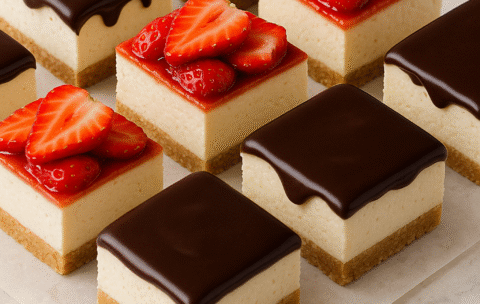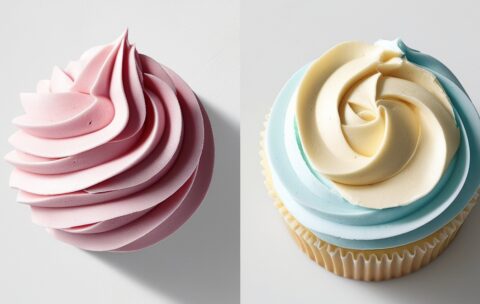Home Update 02
October 4, 2023 2025-06-05 13:04Home Update 02
Become a Home Chef
Learn to cook from scratch and master restaurant-quality meals in your own kitchen. Perfect for beginners and food lovers.

Our Top Courses
We've selected the best programs to get you started. Each course offers step-by-step lessons, hands-on recipes, and guaranteed results — even for beginners.
Espresso Martini
7 Lessons
2.5 hours
Intermediate
What you'll learn
Historical Background: Trace the origins of the Espresso Martini and understand its cultural impact in the mid-1980s London bar scene.
Ingredient Selection: Identify the ideal vodka and coffee liqueur varieties, plus quality indicators for fresh espresso beans.
Espresso Extraction: Master key variables—pressure, temperature, and timing—to pull a shot optimized for a cocktail.
Mixology Techniques: Learn dry-shaking and ice-shaking methods to achieve a rich, stable crema and a perfectly chilled drink.
Straining & Presentation: Discover how to double-strain for a crystal-clear pour, layer foam properly, and place garnishes without collapsing the crema.
Serving & Pairing: Explore glassware choices, serving temperatures, and ideal food pairings for various occasions.
Prosciutto-Wrapped Melon
4 Lessons
2 hours
Intermediate
What you'll learn
How to select the best melon (e.g., cantaloupe or honeydew) for optimal sweetness and texture
How to choose high-quality prosciutto (understanding different curing methods and grades)
Proper slicing and portioning techniques for both melon and prosciutto
Tips for assembling prosciutto strips and melon wedges so they stay intact and look polished
Flavor-pairing insights (e.g., drizzling aged balsamic or adding a fresh herb garnish)
Chocolate Mousse
5 Lessons
2.6 hours
Intermediate
What you'll learn
How to select the right chocolate type for mousse (dark, milk, or white)
Techniques for achieving light, airy texture without deflating
How to temper chocolate for maximum flavor and smoothness
Tips for folding ingredients like a pro
Creative plating and garnishing ideas (berries, mint, edible flowers)
Storage methods to keep mousse fresh and fluffy
Decorative Piping & Sugar Flowers
3 Lessons
4.3 hours
Intermediate
What you'll learn
Icing Consistency & Color Blending
Adjusting buttercream and royal icing to the proper firmness for different piping tasks.
Techniques for tinting icing and gum paste to achieve natural, gradient effects.
Piping Basics to Advanced Motifs
Foundational strokes (dots, lines, shells) leading to scrolls, rosettes, ruffles, and lace patterns.
Creating texture, dimension, and contrast through varying pressure, speed, and tip selection.
Sugar Flower Construction
Preparing and conditioning gum paste and fondant for pliability.
Forming petals, leaves, and buds for common flowers (roses, peonies, ranunculus).
Assembling individual elements into realistic bouquets and sprays.
Composition & Placement
Designing balanced cake layouts: focal points, color harmony, and scale.
Securing decorations on tiered and multi-surface cakes without collapse.
Troubleshooting & Finishing Touches
Preventing issues such as cracking, sagging, or color bleeding.
Applying final details: dusting, veining, and edible luster for lifelike appearance.
Salvatore’s Legacy
5 Lessons
3.3 hours
Intermediate
What you'll learn
How to select and source top-tier amaro and ultra-aged rum for balanced depth
Techniques for saffron-infusing sweet vermouth and achieving optimal flavor extraction
Proper stirring methods to maintain clarity and texture
The importance of glassware choice and garnish to enhance aroma and presentation
How to adjust sweetness and bitterness ratios to suit individual palates
Pairing Salvatore’s Legacy with fine cheeses, dark chocolate, or light desserts
Mushroom Vol-au-Vent with Sour Cream and Thyme
3 Lessons
1 hour
Intermediate
What you'll learn
How to select and prep a mix of wild mushrooms for maximum flavor (cleaning, slicing)
Techniques for sautéing mushrooms to develop deep, caramelized notes without becoming soggy
Crafting a silky, sour cream–based mushroom sauce (balancing acidity and creaminess)
Proper assembly of homemade or store-bought puff pastry shells to maintain crispness
Finishing touches: infusing fresh thyme, seasoning, and plating for an attractive presentation
Art of Fondant & Modeling Chocolate
4 Lessons
1.2 hour
Intermediate
What you'll learn
Fondant Fundamentals: How to knead, roll, and cover a cake in smooth fondant; troubleshooting common issues like tearing or cracking.
Color Mixing & Painting: Methods for achieving uniform pastel or vibrant hues using gel, powder, and airbrush techniques; blending shades for gradients and ombré effects.
Modeling Chocolate Preparation: Step-by-step process to make stable, pliable modeling chocolate at home—adjusting ratios for firmness or flexibility.
Sculpting Techniques: Building 3D elements (flowers, animals, figurines) layer by layer; using armature supports for larger models.
Texture & Embellishment: Creating realistic surface details—wood grain, lace patterns, ruffles, and draping—using molds, veiners, embossing tools, and impression mats.
Piping & Detailing: Accenting fondant and modeling chocolate pieces with royal icing, edible beads, and dusting powders to add dimension and realism.
Assembly & Structural Integrity: Best practices for attaching heavy sugar components to cake tiers; internal support systems (dowels, skewers) to ensure stability during transport and display.
Fattoush
5 Lessons
1.3 hour
Intermediate
What you'll learn
How to select and prepare a variety of crisp lettuces and vegetables.
Techniques for toasting or frying pita to achieve perfect crunch.
Crafting a signature sumac–lemon vinaigrette for authentic flavor.
Balancing textures: integrating greens, veggies & pita chips.
Creative add-ins: from pomegranate to za’atar for seasonal twists.
Presentation tips to serve fattoush attractively as part of a mezze spread.
Mini Crab Cakes with Lemon Aioli
5 Lessons
58 minutes
Intermediate
What you'll learn
How to select and handle fresh lump crab meat for maximum flavor and minimal shell fragments.
The proper ratio of binders (egg, mayonnaise, breadcrumbs) to create tender, non-gummy crab cakes.
Techniques for shaping consistently sized mini patties that hold together during cooking.
Pan-frying tips to achieve a uniformly golden, crisp exterior without overcooking the interior.
How to prepare a smooth, emulsified lemon aioli with the right balance of acidity and creaminess.
Plating and serving suggestions to present mini crab cakes attractively for guests.
Mojito
3 Lessons
2.3 hours
Intermediate
What you'll learn
How to properly muddle mint and sugar to release essential oils without bruising the leaves.
The ideal ratio of white rum, fresh lime juice, and simple syrup for a perfectly balanced drink.
Techniques for layering ingredients and adding soda water to preserve carbonation.
Tips for selecting the freshest mint varieties and hand-rolling or tearing leaves.
Methods to crush ice at home for that classic “frosty” Mojito texture.
Variations on the traditional recipe, including flavored syrups or fruit additions.
Choose Your Category
Our courses are grouped by category to help you find what suits your taste. From quick dinners to gourmet desserts — start with what inspires you.



About Our Culinary Journey
We are passionate about bringing the joy of cooking to everyone. Our mission is to empower food lovers with the skills and confidence to create delicious meals at home. With expert chefs, innovative teaching methods, and a love for culinary arts, we’re here to inspire your kitchen adventures.
Our Commitment
Everyone can cook well. Our courses offer clear guidance to ensure success for all skill levels.
Community Focus
Join our foodie community. Share creations and grow in a supportive environment.
Why Choose Our Culinary Courses?
Our courses are designed to make cooking fun, accessible, and inspiring. Whether you're a beginner or a seasoned cook, our unique features will help you elevate your skills and unleash your culinary creativity.

Expert Instructors
Learn from world-class chefs with years of experience. Our instructors guide you step-by-step, sharing professional tips.
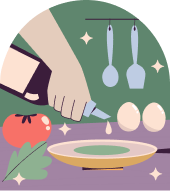
Flexible Learning
Study at your own pace, anytime, anywhere. Our online platform offers 24/7 access to lessons, so you can fit cooking into your busy schedule.

Hands-On Recipes
Practice with real recipes designed for all skill levels. From classic dishes to modern creations, you’ll master meals that impress every time.
What Our
Students Say
Hear from our happy students who have transformed their cooking skills with our courses. From beginners to seasoned cooks, our community loves sharing their success stories!
"This course completely changed how I cook! The instructors are so knowledgeable, and the lessons are easy to follow. I’m now confident making dishes I never thought I could."
Emma Johnson
"I love the flexibility of these courses. I can learn at my own pace and still feel supported. The recipes are amazing, and I’ve impressed my family with new dishes!"
Michael Chen
"The vegan cooking course was a game-changer for me. I learned so many creative ways to make plant-based meals that taste incredible. Highly recommend!"
Sophie Martinez
"The hands-on approach made learning so fun! I went from burning toast to baking artisan bread in weeks. Thank you for such an inspiring experience!"
James Carter
Discover Our Newest Culinary Courses
Get inspired by our latest additions! These exciting courses bring fresh ideas and techniques to your kitchen, perfect for food lovers eager to try something new. Browse our carousel to find your next culinary adventure.
Whiskey Sour
4 Lessons
1.2 hour
Intermediate
What you'll learn
History & Origins: Discover the origins of the Whiskey Sour, including its 19th-century naval roots and how it evolved into a mainstream favorite.
Ingredient Selection: Learn how to choose the right whiskey (bourbon, rye, or blended), select fresh lemons, and prepare simple syrup.
Techniques & Ratios: Master the proper juice-to-whiskey ratio (typically 2:1), the role of egg white (optional), and the importance of “dry shaking” versus “wet shaking.”
Shaking & Pouring: Develop your shaking technique to achieve a balanced, chilled cocktail with the signature frothy top.
Garnishing & Presentation: Practice professional garnishing methods—lemon wheel, maraschino cherry, and bitters drops—to elevate appearance and aroma.
Variation & Customization: Explore variations such as using different citrus (e.g., lime), flavored syrups, or spiced bitters to personalize the drink.
Tasting & Evaluation: Hone your palate to identify balance, acidity, sweetness, and mouthfeel, ensuring each Whiskey Sour is perfectly harmonious.
Moroccan Orange & Olive Salad
6 Lessons
1.6 hour
Intermediate
What you'll learn
How to segment oranges for a clean, pith-free presentation
Techniques for balancing sweet citrus with salty olives and spicy harissa
Crafting a cumin-infused vinaigrette and emulsifying dressings
Proper knife skills for uniform onion slicing and olive prep
Paella Valenciana
2 Lessons
3.3 hours
Intermediate
What you'll learn
History and Regional Context
Origins of Paella Valenciana and its connections to Valencian agricultural traditions.
Distinctions between classic Valencian paella, seafood paella (Paella de Mariscos), and other regional variants.
Selecting and Preparing Ingredients
Rice varieties (Bomba vs. Calasparra) and their impact on texture.
Choosing quality proteins (chicken and/or rabbit), native beans (judía verde, garrafó), olive oil, and saffron threads.
Preparing vegetables: green beans (bajoqueta), garrafó beans, fresh tomatoes, and garlic.
Cooking Techniques and Timing
Building a sofrito base: sautéing meat, vegetables, and spices to develop depth of flavor.
Proper rice-to-liquid ratio and how to incorporate stock infused with saffron.
Achieving the prized socarrat (crispy rice crust) without burning.
Adjusting heat levels for even cooking and optimal moisture absorption.
Presentation and Serving
Traditional ways to serve Paella Valenciana—family style straight from the paellera.
Garnishing options (lemon wedges, fresh parsley) to enhance aroma and appearance.
Tips for reheating and storing leftovers without compromising texture.
No-Bake Cheesecake Layered Cake Squares
5 Lessons
3.5 hours
Intermediate
What you'll learn
Preparing and pressing the ideal crust (graham, cookie, or nut-based)
Mixing smooth, lump-free cheesecake filling with flavor variations (vanilla, citrus, chocolate)
Layering multiple cheesecake batters for striped or marbled effects
Setting and chilling methods to ensure clean, precise slices
Decorating techniques: fruit compotes, ganache drips, whipped cream piping
Cutting and serving tips to maintain sharp edges and professional presentation
Salmon Confit on Baby Spinach
4 Lessons
1.4 hour
Intermediate
What you'll learn
How to choose high-quality salmon for confit (fresh-fish selection, portion sizes)
Steps to prepare the poaching oil with aromatics (garlic, thyme, citrus)
Technique for gently poaching salmon at a precise low temperature (175–185 °F / 80–85 °C)
Preparing baby spinach with a light lemon-mustard vinaigrette (emulsion basics)
Methods for plating so the salmon and spinach complement each other visually and texturally
Grilled Salmon with Lemon Butter
4 Lessons
1.8 hour
Intermediate
What you'll learn
Outcome Description
Selecting Quality Salmon Identify sustainable salmon cuts (filets vs. steaks), check for freshness, and understand label terms (wild-caught vs. farmed).
Marinade & Seasoning Techniques Prepare a simple herb-citrus marinade that enhances flavor without overpowering the fish.
Grilling to Perfection Control grill temperature, manage flare-ups, and achieve crisp skin while maintaining a juicy interior.
Preparing Lemon Garlic Butter Combine melted butter, fresh lemon juice, garlic, and herbs to create a bright finishing sauce.
Doneness & Presentation Use visual cues and a thermometer to judge when salmon is cooked through (125–130°F / 52–54°C), and plate with complementary garnishes.
Salvatore’s Legacy
5 Lessons
3.3 hours
Intermediate
What you'll learn
How to select and source top-tier amaro and ultra-aged rum for balanced depth
Techniques for saffron-infusing sweet vermouth and achieving optimal flavor extraction
Proper stirring methods to maintain clarity and texture
The importance of glassware choice and garnish to enhance aroma and presentation
How to adjust sweetness and bitterness ratios to suit individual palates
Pairing Salvatore’s Legacy with fine cheeses, dark chocolate, or light desserts
Buttercream Icing Techniques
5 Lessons
59 minutes
Intermediate
What you'll learn
Buttercream Foundations: Basic ratios for American, Swiss, Italian, and French buttercreams; key differences in texture, sweetness, and stability.
Temperature Control: How to handle ingredients (room-temperature vs. chilled butter, sugar syrup stages) to prevent graininess or separation.
Flavoring & Infusing: Incorporating extracts, fruit purées, ganache, or cocoa; balancing sweetness and fat without compromising consistency.
Coloring Strategies: Best practices for gel vs. powdered colors; preventing “bleeding” or streaking when blending multiple hues (e.g., ombré or watercolor effects).
Spreading & Smoothing: Techniques for achieving glass-smooth sides (bench scraper, icing turntable, hot spatula method) and avoiding common marks or air pockets.
Piping & Decorative Textures: Creating rosettes, ruffles, ruffles, basketweave, petals, and multi-tone piping (hidden two-tone tips, reversible bags).
Stabilizing for Warm Climates: Adjusting recipes (adding meringue powder or corn syrup) so buttercream holds shape in humid or warm environments.
Troubleshooting Common Issues: Fixing grainy buttercream, curdled mixtures, overly soft or too-stiff icing; rescue methods (re-creaming, adjusting sugar syrup).
Mushroom Vol-au-Vent with Sour Cream and Thyme
3 Lessons
1 hour
Intermediate
What you'll learn
How to select and prep a mix of wild mushrooms for maximum flavor (cleaning, slicing)
Techniques for sautéing mushrooms to develop deep, caramelized notes without becoming soggy
Crafting a silky, sour cream–based mushroom sauce (balancing acidity and creaminess)
Proper assembly of homemade or store-bought puff pastry shells to maintain crispness
Finishing touches: infusing fresh thyme, seasoning, and plating for an attractive presentation
Golden Chocolate Fondant
5 Lessons
3.3 hours
Intermediate
What you'll learn
Ingredient Selection & Preparation
How to choose and combine premium dark chocolate, unsalted butter, and the unique ingredient (edible gold dust) to achieve both flavor depth and visual appeal.
Proper techniques for melting and tempering chocolate to ensure smooth consistency.
Batter Creation & Consistency Control
Step-by-step guidance on mixing flour, sugar, eggs, and cocoa to create a velvety batter that bakes into a crisp exterior while preserving a molten core.
Tips for testing batter viscosity to guarantee consistently gooey centers.
Molding & Baking Techniques
Methods for greasing and flouring individual ramekins or molds so the fondants release cleanly.
Precise oven temperature and timing strategies—accounting for oven variances—to achieve the signature “golden” crust with a flowing center.
Golden Finish Application
How to incorporate edible gold dust or gold leaf: when and how to apply it so it adheres beautifully without melting or smearing.
Alternative decoration ideas (e.g., gold-dusted raspberries, gold-tinted sauce) to complement the fondant’s appearance.
Plating & Serving
Techniques for plating fondants to maximize visual impact—pairing with complementary sauces (e.g., raspberry coulis, salted caramel) and garnishes.
Recommendations on optimal serving temperature and timing to preserve the molten center for guests.


